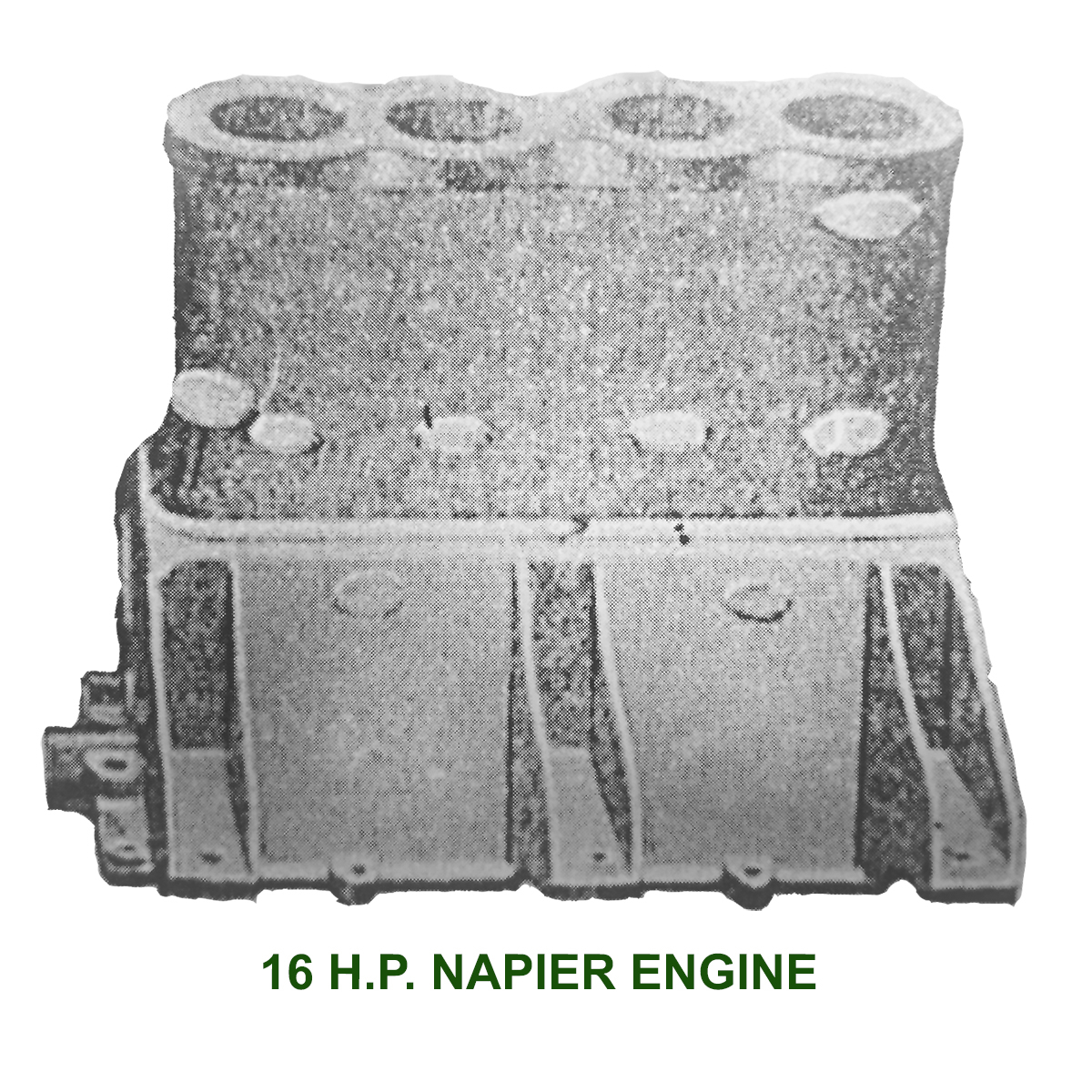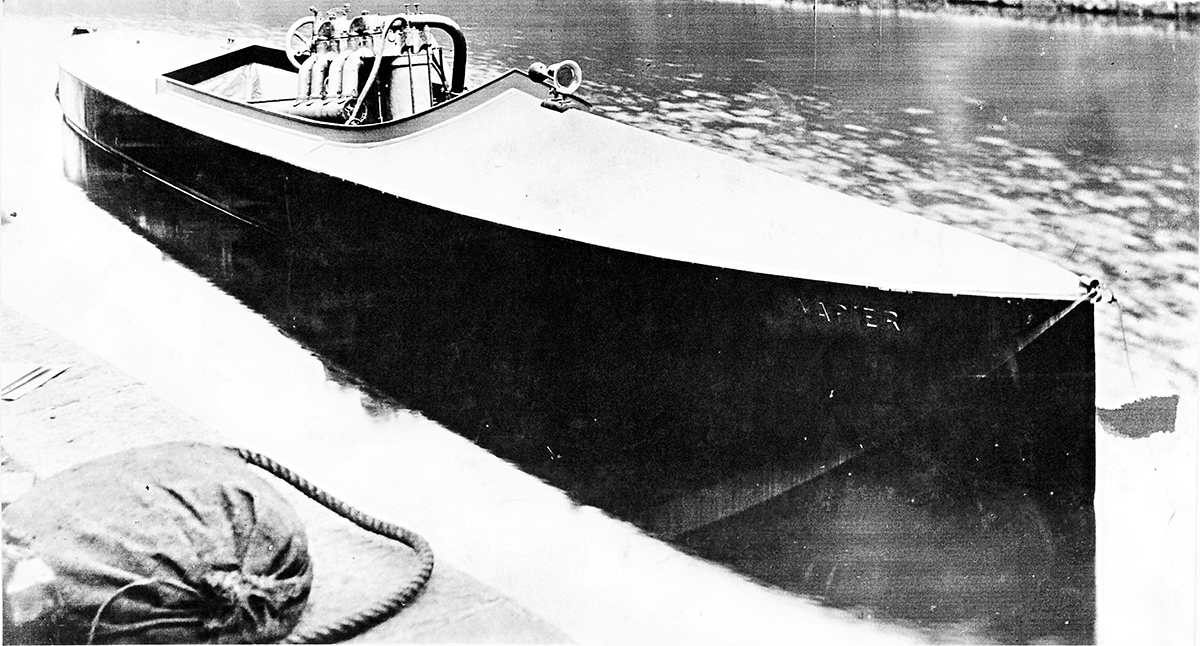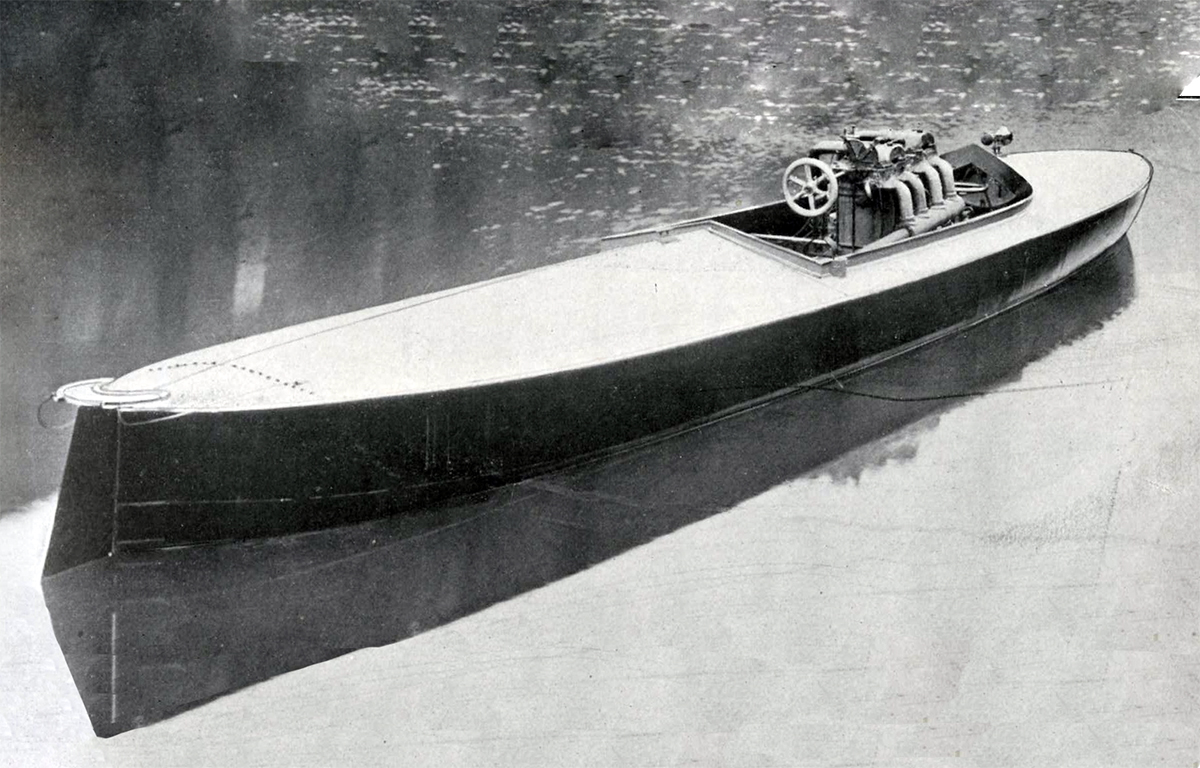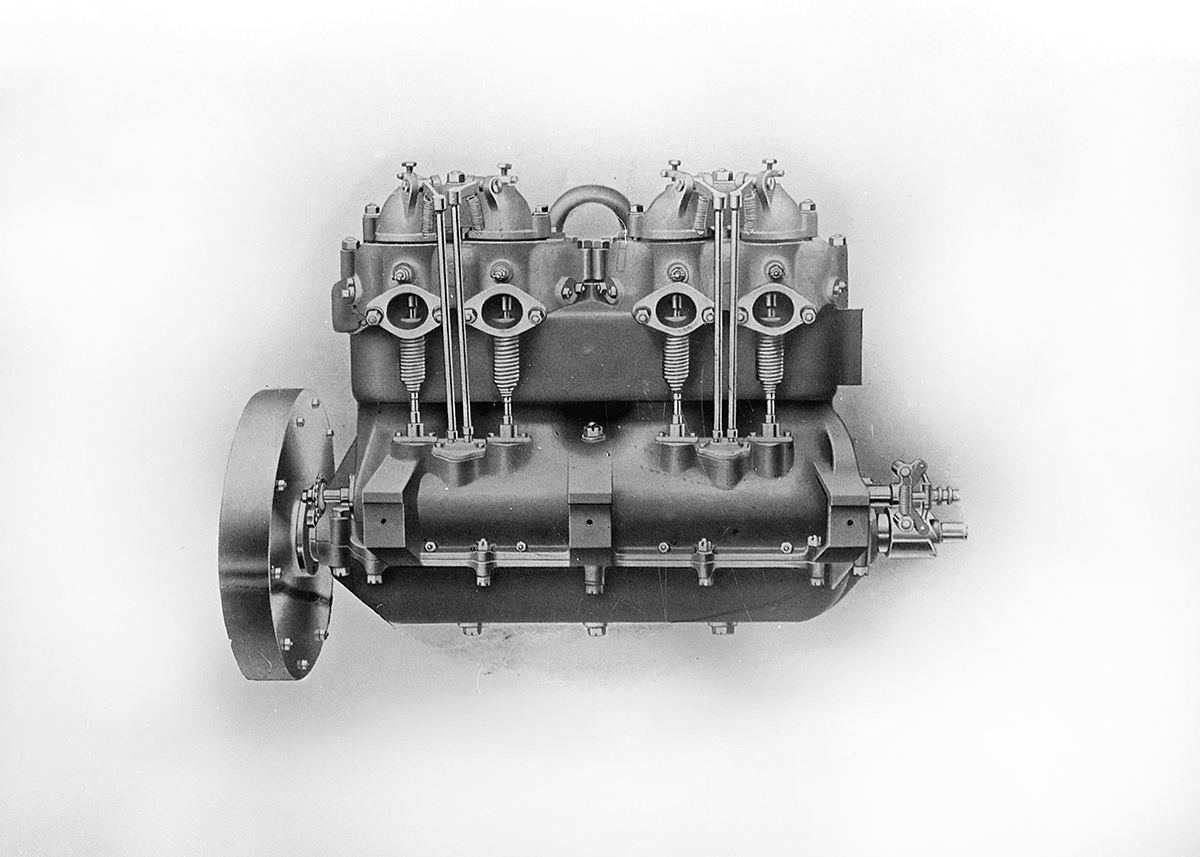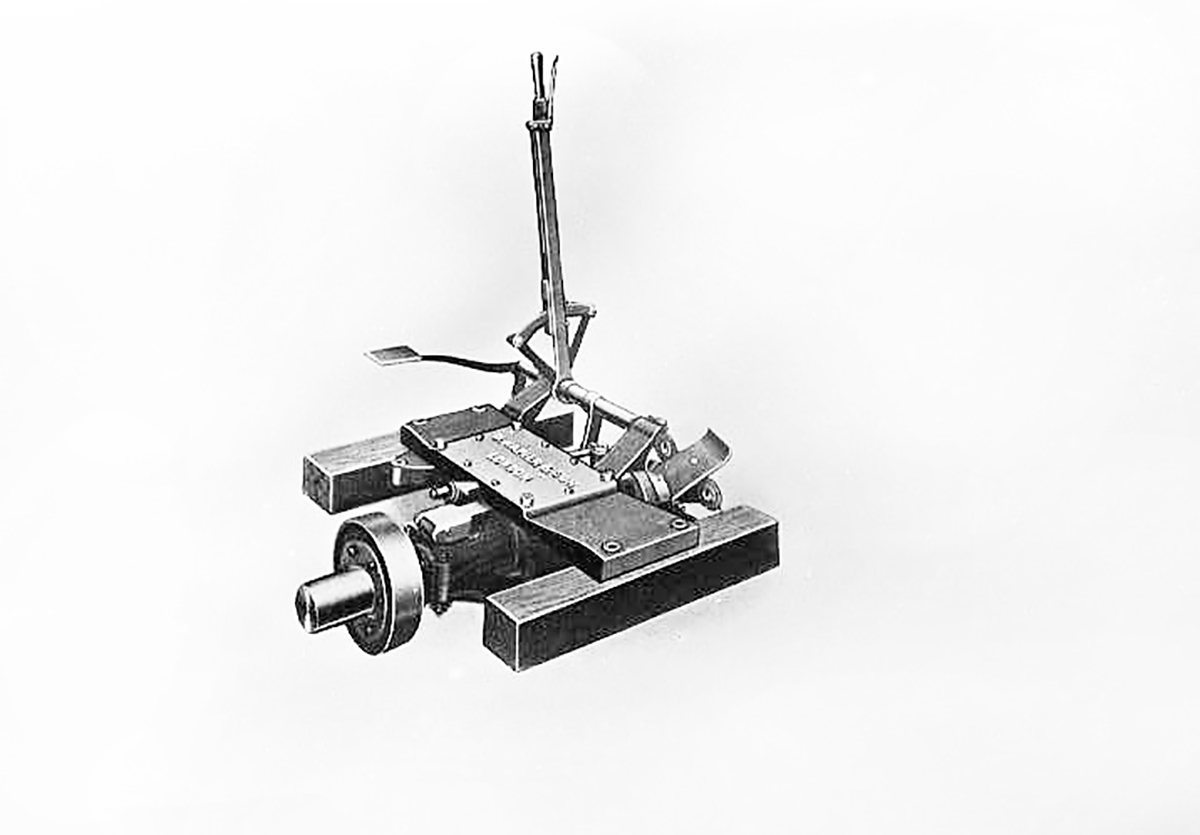Early Napier Marine Engines
D Napier & Son became involved in marine engine production in the early 1900’s when Montague Napier’s business partner S.F. Edge became interested using Napier engines to power motor launches. In 1901 Edge commissioned the Saunders Patent Launch Building Syndicate Ltd to build him a launch fitted with a Napier 4-cylinder 16 hp engine. Napier 16 hp engines were also fitted in their vehicles so it is probably reasonable to surmise that Napier’s early marine engine designs were the same engine but with a modified gearbox.
Two years later in 1903 Edge decided that the Napier company would gain a lot of publicity by competing in (and winning) the Harmsworth Trophy, the world’s first international motorboat race. Edge entered the appropriately named ‘Napier’ a 40′ all-steel hulled vessel fitted with a big four-cylinder Napier engine giving 75 HP at 800 rpm. On 11th July 1903 ‘Napier’ won the final 8.5 mile race from Queenstown to Cork and the Cup with an average speed of 19.53 mph. Edge and therefore D Napier & Son were also credited with the world water speed record continuing the trend for Napier’s dominance on land, sea and in the air.
The marine engine side of Napier was extremely small compared to the motor vehicle business however the use of Napier engines in high speed boats did a lot to help publicise the Napier business as a whole.
The close working relationship with Saunders saw Napier powered vessels such as Napier Minor, Napier III, Napier ‘Bulb’ and through to the Yarrow Napier (which was actually built by Saunders) of 1906 all winning races. This vessel won the Harmsworth International Trophy in 1906 for Great Britain and caught the eye of the Admiralty. Some of the earliest DNS contracts with the British Admiralty involved prototype Yarrow-Napier high speed steel hulled Motor Torpedo boats. One such example was a 60′ MTB built by the Yarrow shipyard and named ‘Mercury II’. This had no fewer than five 72 bhp E11 engines driving three screws. This vessel was inspected an tried out by King Edward VII during his Spithead review. Yarrow also built two similar vessels for the Austro-Hungarian Navy.
Larger petrol engine MTB’s were also sought by the Admiralty to replace much heavier steam driven designs. The 90′ prototype known as ‘1225’ was powered by four large 200hp six-cylinder engines which were designed by Napiers but built by Yarrow. Although fast, this was never commissioned by the Royal Navy but some were sold to the Australian and Brazilian Navies!

